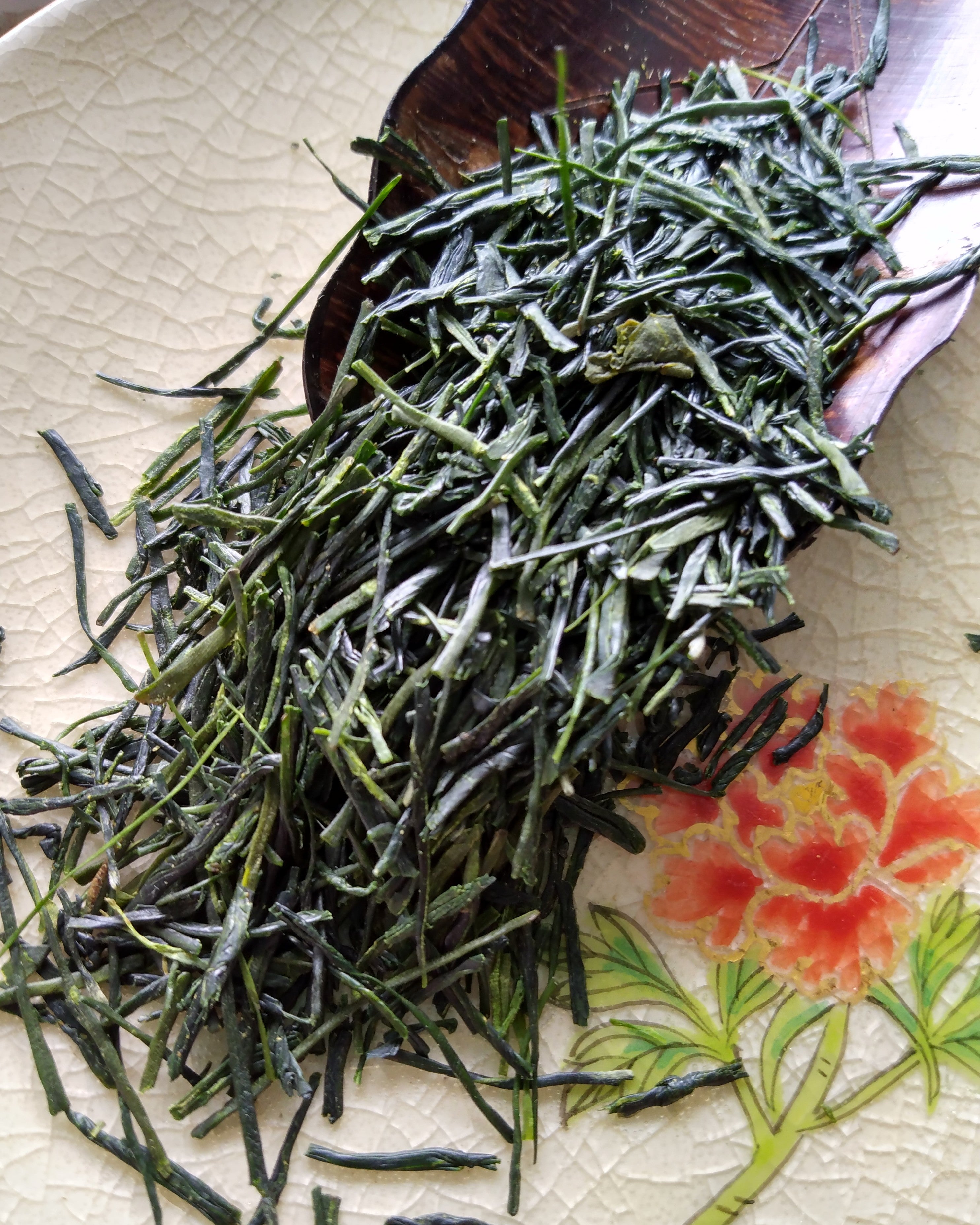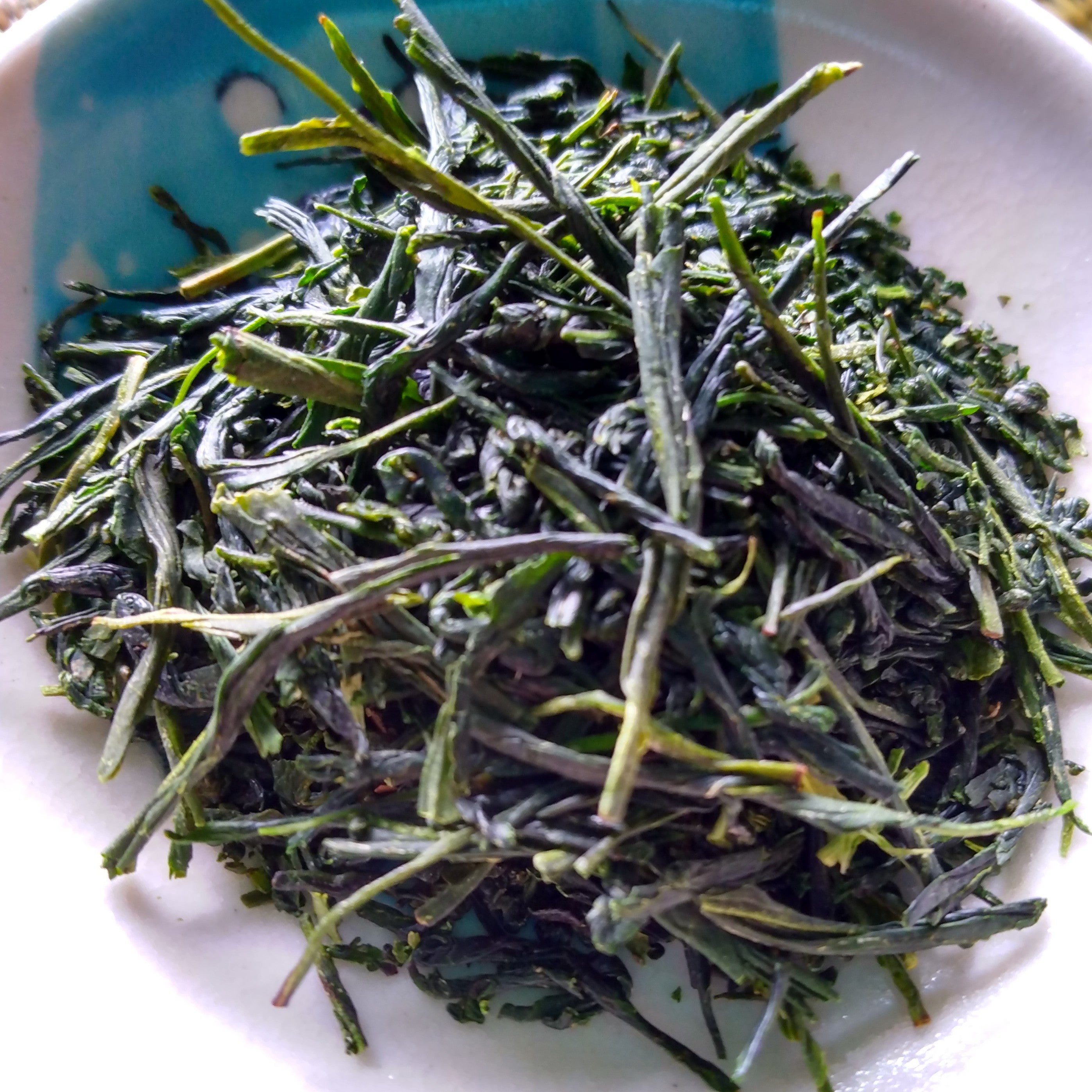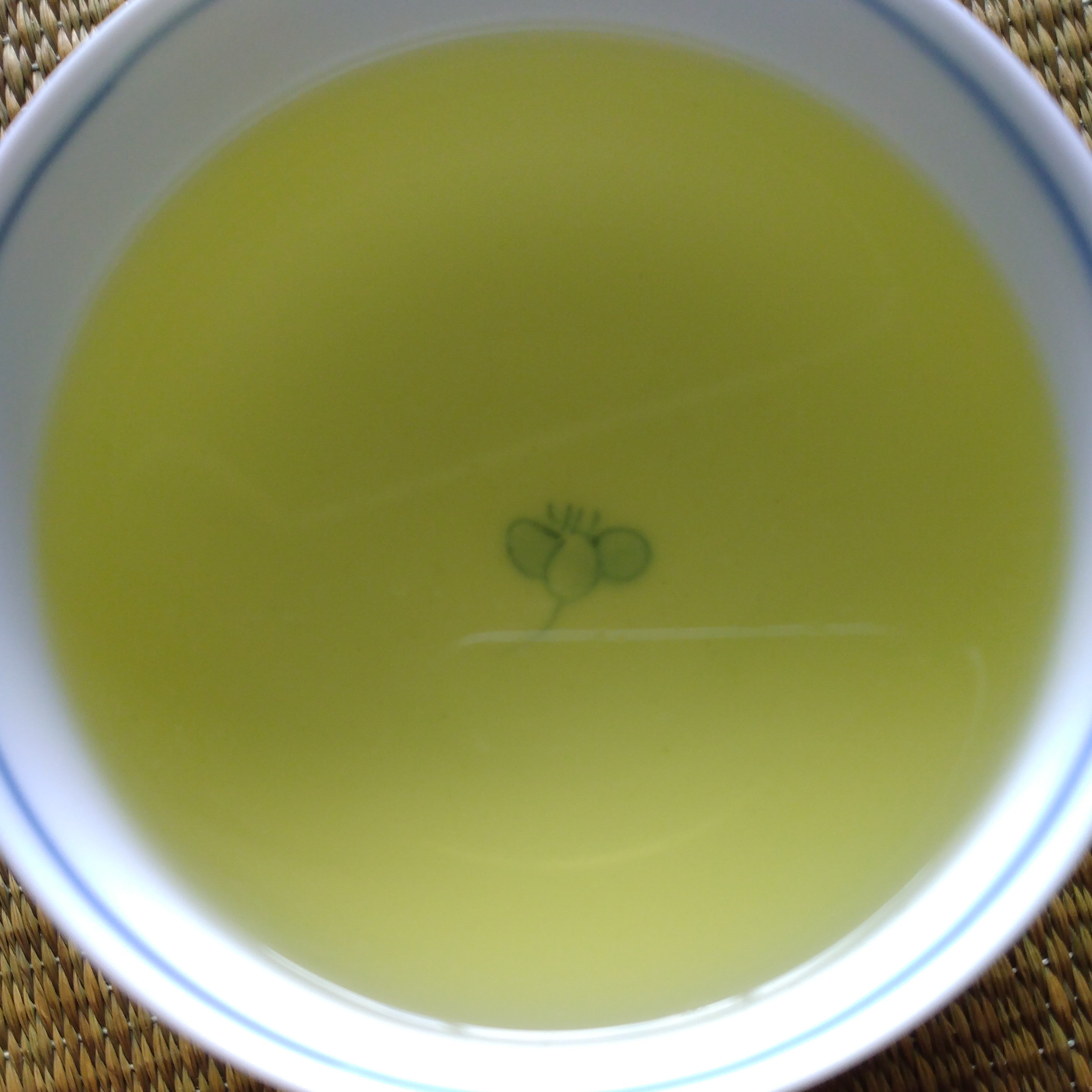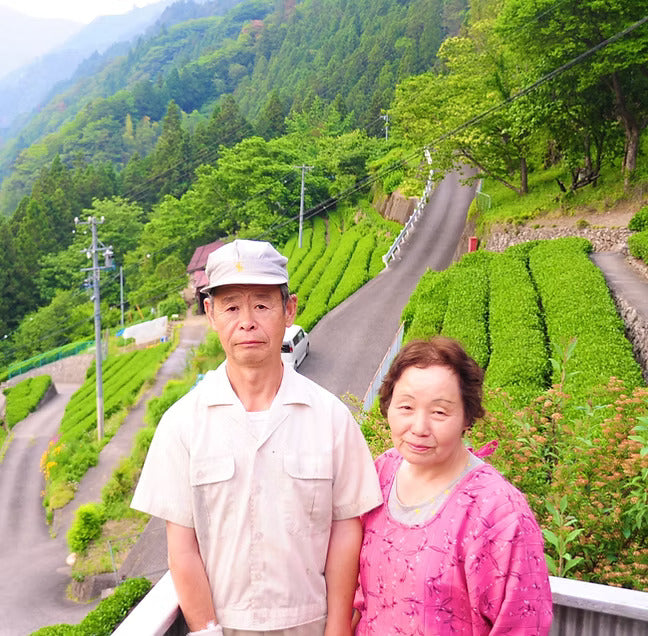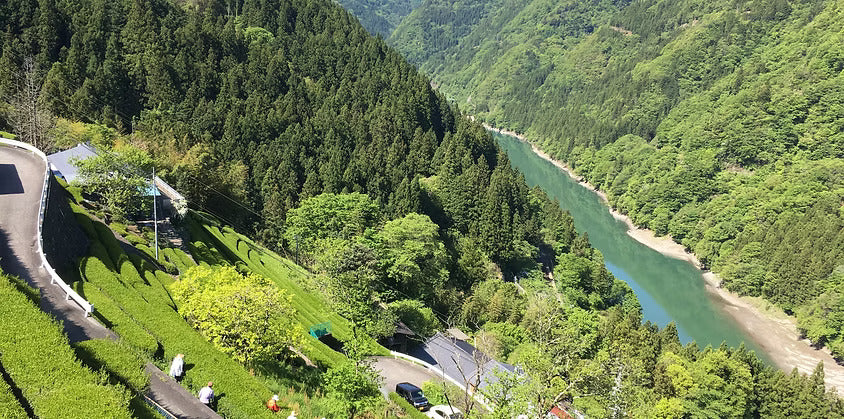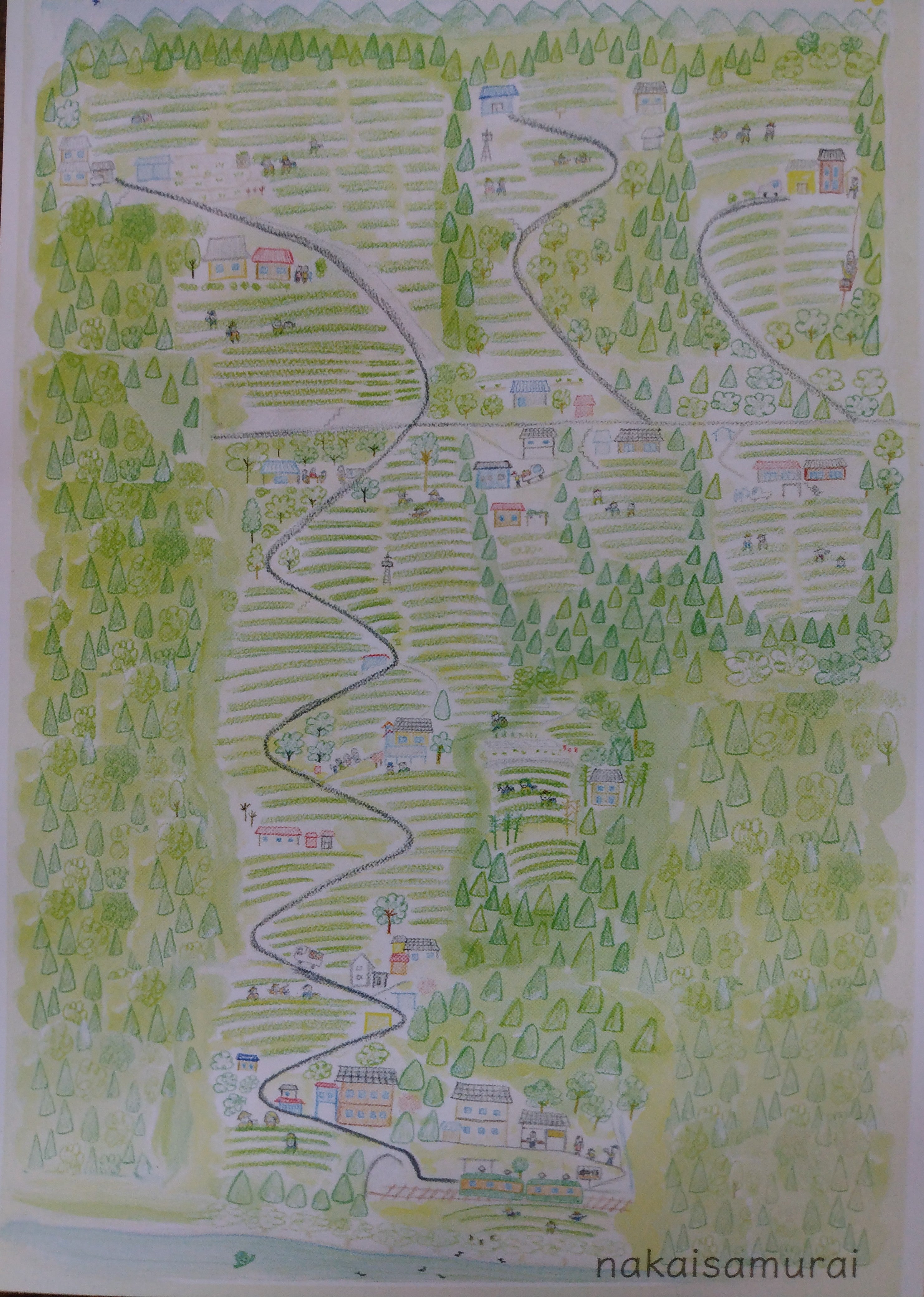Description
Kakishita no Ocha (Mr. Kakishita's Tea); a Sencha grown by farmer Kakishita Koki in Nakaisamurai, a small district within Tenryu (Heaven's Dragon) Village in southern Nagano Prefecture. Hand-picked and Naturally Grown with no chemical fertilizers or pesticides. 30g. 2025 Shincha (New Harvest Tea).
Origin: Nakaisamurai, Tenryu Village, Nagano Prefecture.
Cultivar: Yabukita
Infuses to a medium golden-green tea with a grassy aroma. Full-bodied with a very round mouthfeel. it has a grassy robust flavor, but still a good balance of amami (sweetness) and shibumi (astringency). The finish is more on the shibumi side, but still a smooth and enjoyable finish.
Farmer Kakishita Koki is the son of farmer Kakishita Tadao, who recently passed away. Tadao's teas were Nagano Prefectural Governor's Award winners on numerous occasions, and his home's tea house was even featured on a prefectural tourism TV ad campaign. Besides being a hard-working tea farmer almost every day of the year, Koki's father's hobby was making homemade umeboshi (pickled plums). We are counting on this next generation Kakishita Family tea farmer to take up the mantle and to continue his father's legacy of making fine teas.
Nakaisamurai is a small district within Tenryu Village that lies along the Tenryu River with sloping hills that are so steep that they seem to be held up by the tea fields. There are no convenience stores or traffic lights, and the community of tea farmers is a tight-knit one. However, the aging rate is the third highest in Japan and farm succession is a difficult challenge. As a place of tea production, it is barely known in Japan. I first saw a feature about Nakaisamurai Tea on Japanese TV, and was completely enthralled by the idyllic environment and the passionate community of elderly farmers and young NPO workers. I reached out to them and a relationship was born to share some of their small production with you.
Commercial tea cultivation in the area is relatively young, going back just to the 1970's. Ten families still farm here and are sales activities are managed by a Non-Profit Organization. The NPO serves to bring in tourism to this hidden valley paradise, revitalizing tea fields and keeping natural farming practices, and to ensure that the aging tea farmers have the help they need to tend the fields and that products are sold directly at a fair price to keep tea culture alive in the area. They create packaging designs, do marketing, operate a small tea cafe, and run tea-picking and tea-making events. As some of the young NPO workers have now become tea farmers in their own right, the program is looking successful for the future of tea in the village.
The last image is a drawing by one of the NPO workers, Ms. Yuka Naito. It shows the Tenryu Village layout of the geography and ten tea farms working in the area. Each of the farms uses a portion of the image on their packaging, and when all of the ten farms' packages are laid out together, it forms the full map image. How charming is that?!
